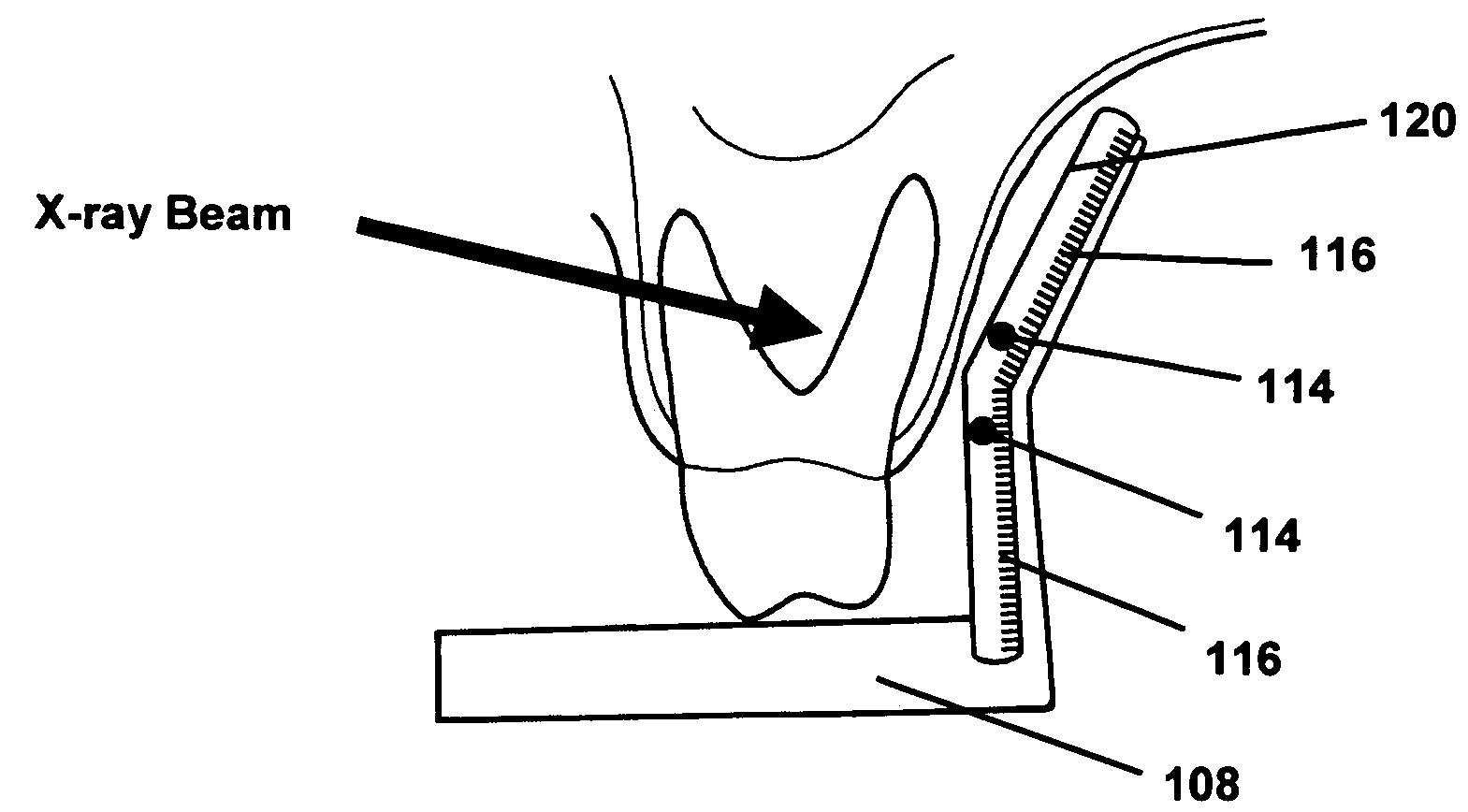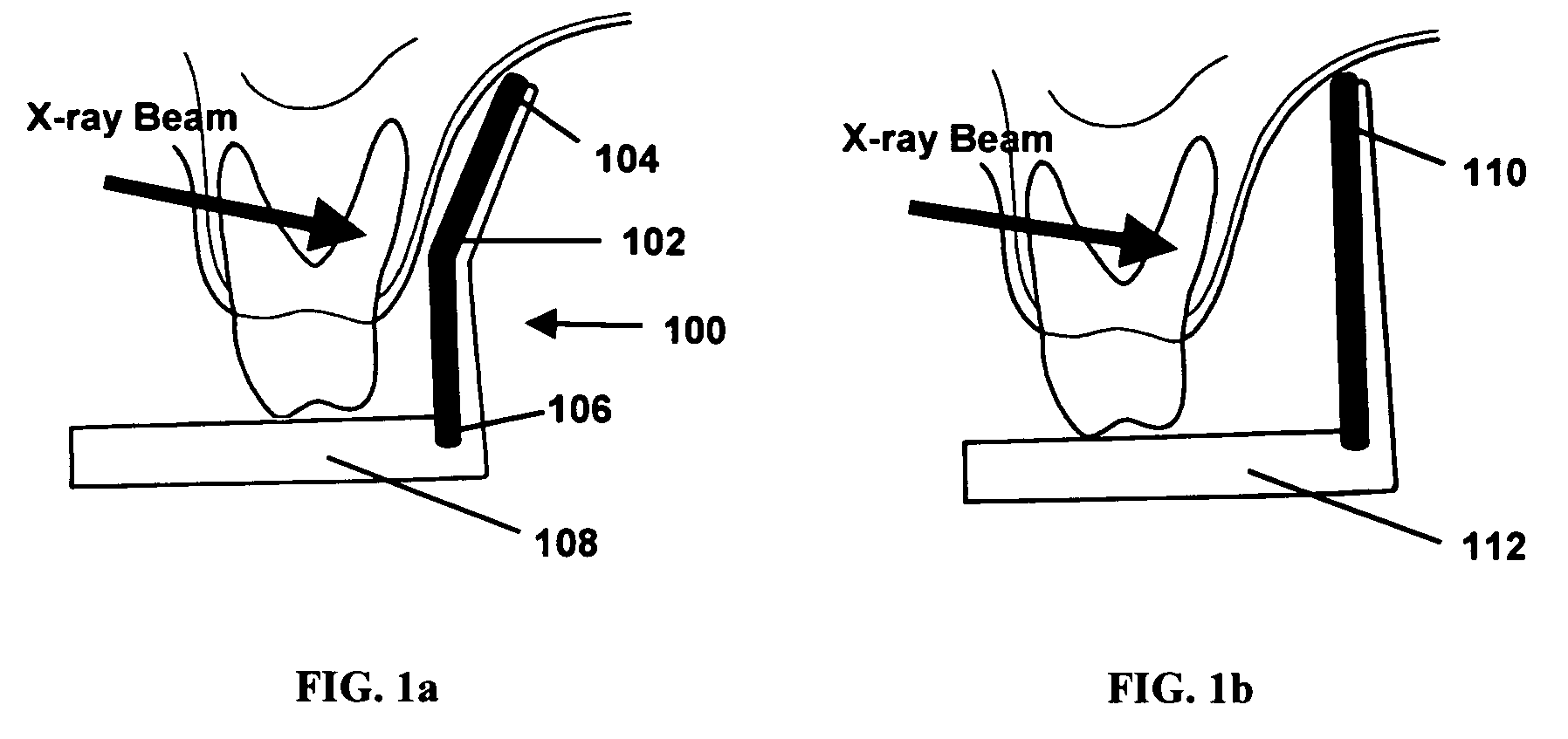Anatomically conforming intraoral dental radiographic sensor
a radiographic sensor and anatomically conforming technology, applied in the field of intraoral sensor design, can solve the problems of image distortion of the intended subject, patient discomfort, and even greater patient discomfort of the sensor, and achieve the effect of increasing patient comfor
- Summary
- Abstract
- Description
- Claims
- Application Information
AI Technical Summary
Benefits of technology
Problems solved by technology
Method used
Image
Examples
Embodiment Construction
[0038]Referring now to the Figures, a sensor embodying the present invention is shown generally at 100 in FIG. 1a. The simplest implementation of an anatomically shaped radiographic sensor 102 embodying the present invention has two abutted imaging planes 104, 106, respectively, as shown in FIG. 1a which illustrates a cross-sectional view through the posterior portion of a patient's maxillary arch. A sensor holder / positioner 108 is shown for retention between a patient's teeth to hold sensor 102 in position during imaging procedures.
[0039]The specific angle of the two imaging planes 104, 106 relative to each other is not critical but empirical testing indicates that angles of about 20-40 degrees result in significant patient comfort relative to a single flat plane of equivalent imaging area. This configuration has been shown to significantly improve comfort and improve subject coverage compared to a standard sensor.
[0040]FIG. 1b is a similar view of a conventional radiographic senso...
PUM
 Login to View More
Login to View More Abstract
Description
Claims
Application Information
 Login to View More
Login to View More - R&D
- Intellectual Property
- Life Sciences
- Materials
- Tech Scout
- Unparalleled Data Quality
- Higher Quality Content
- 60% Fewer Hallucinations
Browse by: Latest US Patents, China's latest patents, Technical Efficacy Thesaurus, Application Domain, Technology Topic, Popular Technical Reports.
© 2025 PatSnap. All rights reserved.Legal|Privacy policy|Modern Slavery Act Transparency Statement|Sitemap|About US| Contact US: help@patsnap.com



